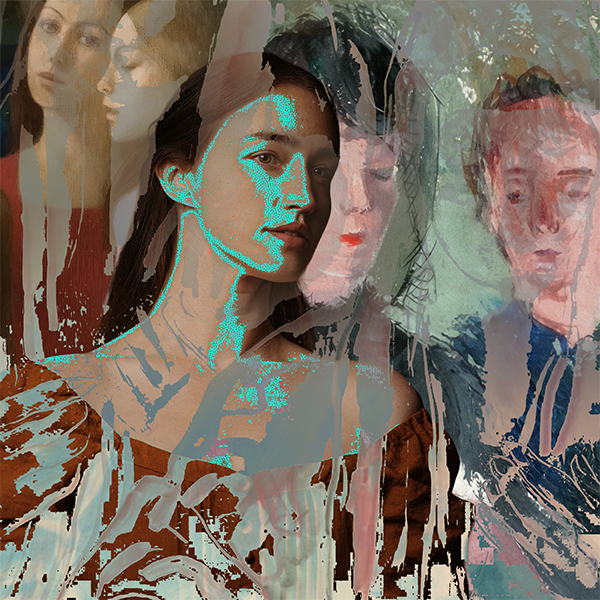Moving From Death to Life in Rwanda
This summer, I had the privilege of spending a week in Rwanda alongside pastors across the U.S. to learn about reconciliation and unity from the Rwandan church. Our group consisted of a multiethnic, intergenerational group of pastors from various denominations with a shared pastoral burden about the fractures and divisions we were experiencing in our congregations across political, social, and racial lines. We each came on the trip committed to the work of reconciliation with an aching hope for unity in the North American church.
The apostle John pens his powerful, compelling words to a divided church in his first letter: “Dear children, let us not love with words or speech but with actions and in truth.” In our present moment, what does love with “actions” and “truth” look like for the North American church? What does it mean for us as leaders and pastors to prophetically bear witness to the gospel and embody the way of love? We discovered answers as we dove twenty-five years into Rwanda’s recent history.
Known as “the country of a thousand hills,” Rwanda’s historical landscape shouts of humanity’s peaks and valleys—what we are capable of—in our ability to hate, and in our powerful capacity to love and forgive. In a country that once began with a unified language, culture, and religion, governmental power structures divided the country into ethnic classes (Hutus, Tutsi, and Twas). As these divisions were made, Tutsis were deliberately targeted and dehumanized over the course of decades. History scholars tell us that Tutsis were being killed in mass slayings long before the systematized racial violence against them that led to one million Tutsis being killed in one hundred days (the 1994 Rwandan Genocide).
It is well documented that in the period leading up to the genocide, church leaders and pastors— those preaching the gospel of Jesus Christ— did not challenge these evils. The local and global church closed their eyes to the systemic oppression, injustices, and violence as these forces matured into genocide. Some pastors betrayed their Tutsi congregants to the government, some pastors even joined in on the killings. Unable to distinguish their call to protect and shepherd their flock from the hope of their own ethnic priority, they abandoned their post. In this moment in time, the Church failed in its prophetic calling and voice.
Unable to distinguish their call to protect and shepherd their flock from the hope of their own ethnic priority, they abandoned their post. In this moment in time, the Church failed in its prophetic calling and voice. Share on XAs our group met with Rwandans who lived through the genocide, we wept together as our hearts were broken for the suffering, trauma, and indescribable brutality they had lived through. Many individuals lost their entire family during the genocide, mothers watched their own babies’ heads crushed, children watched their parents’ limbs being torn off, family members’ bodies were macheted into pieces—senseless, violent murders of innocent human beings. The few who escaped were met with more violence, poverty, and oppression as refugees.
In the aftermath of the genocide, the country began to pick itself up from the chaos and destruction of violence. A new wave of leadership within the Church and governmental structures birthed a movement of reconciliation and unity. The movement included three pivotal practices: (1) truth-telling; (2) empathy, and (3) forgiveness.
Truth-telling and Confession
In an unprecedented move, “Gacaca” meetings were created for those who were willing to confess to their role in the killings who then could be restored to society. The government and church partnered together to say that there would be great consequences for anyone who tried to take revenge. As individuals who had initially partook in great violence re-entered society, they were then given the opportunity to live in a Peace Village, a designated neighborhood where Hutus and Tutsis intentionally resided and sought unity and reconciliation.
Empathy and Compassion
In the Peace Village, individuals worked side by side for hours, days, and months with their “enemy” to build a home alongside of one another. In the process of building, perpetrators sought compassion while victims sought healing. Perpetrators for the first time could hear directly from their victims of their laments of violence and stories of loss. Victims for the first time could directly find out from their perpetrators where their loved ones’ bodies were, and listen to their perpetrators’ stories of regret and broken hostility.
Forgiveness & Mercy
Our group visited the Peace Village, and it was here that we bore witness to a profound, hopeful embodiment of reconciliation. In their church building, we saw genocide victims who had watched their perpetrators slay their family members worship beside one another with joy and tears. We listened to testimony after testimony of the power of the gospel through confession and forgiveness. Jesus, the source of love, the redeemer of this community, was made manifest through the community’s practice of truth-telling, empathy, and forgiveness. Perpetrators and victims, true enemies of one another, sought to love each other. They bore the image of God to one another—freeing one another from fear, hatred, revenge, bitterness, anger, and condemnation.
We saw victims who had watched their perpetrators slay their family members worship beside one another with joy & tears. We listened to testimony after testimony of the power of the gospel through confession & forgiveness. Share on XThose who are aware of Rwanda’s reconciliation efforts may think what took place there is far removed from our context as the North American church, but what many don’t realize is that Rwanda was the most Christian African nation at the time of the genocide.
One of the most dissonant truths we came face to face with as a pastoral group was the resemblance we found to our own evangelical response to systemic racial violence. We saw how the power of words and dehumanization against a people group can not only incite hatred but also great violence. We saw how powerfully silence and complicity can amplify the evils of racism. We are not so different from the Hutus and Tutsis– our racial and ethnic priorities can often blind us to subtle and not-so-subtle words used to dehumanize those who are considered “other.”
As a nation, we still have yet to collectively “tell the truth” and acknowledge all the ways institutional and systemically racist structures are reflected in our criminal justice system, health and wealth disparities, and housing and educational systems. According to sociologist Michael Emerson, because [American] evangelicals view our primary tasks as evangelism and discipleship, we tend to avoid issues that address ethnic and racial issues. Thus, we have not been willing to take a posture of hearing realities impacting communities of color and responding with a gospel-centered love that will have a cost. We cannot experience forgiveness and full healing until we begin to embody these practices.
Our Rwandan brothers and sisters demonstrated an embodied example both of laying down one’s life individually and addressing systemic oppression collectively. The intentional practices of truth-telling and confession, empathy and compassion, forgiveness and mercy, both individually and collectively, moved the community from death and into life. In their faithfulness, Jesus freed them from resentment, revenge, and hatred, and spurred them toward hope, reconciliation, healing, and joy.
As a group, we saw with new vision Jesus’ outstretched arms of love on the cross. The witness of our Rwandan brothers and sisters bore their pierced sides, their torn limbs, their crushed bodies… yet their outstretched arms of love embodied truth-telling, empathy, and forgiveness.
As I reflect on the state of the Church in North America in all of its complexities—the growing divide and the hope for unity—I hear the resounding voice of Jesus to “go and tell…” urging me to bear witness to what I have seen. As individuals, as the church, as a nation— do have eyes to see, ears to hear? Will we allow this gospel message to transform and compel us to live out justice, compassion, and reconciliation?



